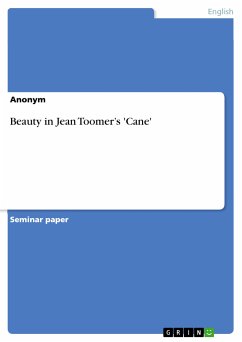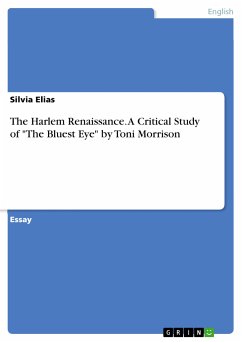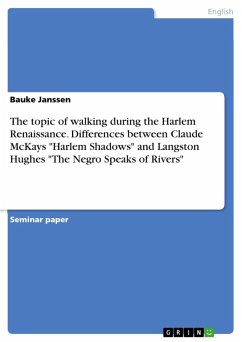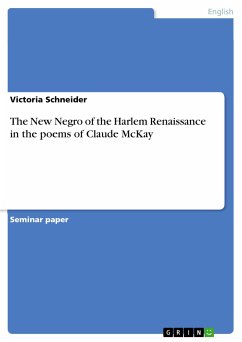Seminar paper from the year 2003 in the subject English Language and Literature Studies - Literature, grade: A (1), Southern Connecticut State University (English Department), course: The Harlem Renaissance, language: English, abstract: Jean Toomer is one of the leading figures in the Harlem Renaissance. His major contribution to literature is Cane, a novel comprised of poetry and prose. Cane’s structure is of three parts. The first third of the book is devoted to the black experience in the Southern farmland. The characters inhabiting this portion of the book are faced with an inability to succeed. The second part of Cane is more urban oriented and concerned with Northern life. The writing style throughout is much the same as the initial section with poetry interspersed with stories. The concluding third of the novel is a prose piece entitled “Kabnis” and can be regarded as a synthesis of the earlier sections. Cane is therefore designed as a circle. Aesthetically, it goes from simple forms to complex ones and then back to simple forms. Regionally, it goes from the South up into the North, and back into the South again. The emphasis of Cane is on characters as well as on setting. The sections entitled “Karintha,” “Becky,” “Carma,” “Fern,” “Esther,” “Rhobert,” “Avey,” and “Bona and Paul” illustrate psychological realism and truths about human nature. The reader is drawn into the characters’ lives, and learns by sharing their everyday trials and feelings. Their characterizations become indistinguishably merged with the landscape that surrounds them. Characteristically, beauty functions as a deceptive tool in Cane. Flowers, women, and the word, all of which generally represent beauty, are reduced to emblems lacking dimension in Toomer’s text. Meaning is flawed and violated. The reader is intentionally deceived by the forms of beauty and left with absence instead of significance. By means of linking beautiful images with violent, explosive, and disturbing thematic openings, Toomer confuses his readers’ sense of meaning. In Cane, Toomer moves the reader with deeply beautiful and intricate language by exploring many different kinds of beauty, such as the abstract qualities of aestheticism, the intimacy of nature’s beauty and the immediacy of human beauty. However, though Toomer begins many of his pictures with seemingly beautiful imagery or qualifies a female character in his writing by her beauty, the breakdown of the aesthetic within his work is widespread. Although beauty seems to be in proportion with reality it is rather distorted. It gives way to nightmarish images and relationships. [...]








